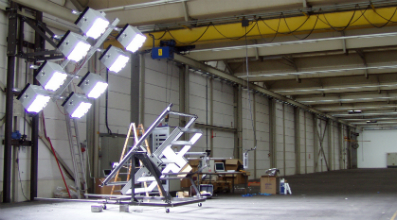Thermal stress in materials
Published: Friday, July 25, 2008
Degradation of materials can be caused by various external influences. One of these is solar radiation, and there are two possible effects. First there is the chemical influence. The radiation causes chemical bonds to break, colours fade and plastics become brittle. The second effect is thermal stress in an object caused by the absorption of solar energy or by sun-induced temperature changes.
For example, when a car is exposed to solar radiation, the temperature inside may rise considerably above ambient. If the materials in the interior of the car have different rates of expansion, the thermal stress may become so high that the material breaks and damage or malfunction occurs.
Tests are generally performed in climate chambers which are equipped with lamps that simulate the sun. The intensity of the artificial sun must of course be checked using radiometers. A typical set-up consists of three instruments, one for UV radiation, one for visible radiation and one for near infra red radiation.
 This selection of instruments complies with the requirements of tests for thermal stress studies, such as DIN 75220 and MIL STD 810 E.
This selection of instruments complies with the requirements of tests for thermal stress studies, such as DIN 75220 and MIL STD 810 E.
DIN describes the ageing of automotive components in solar simulation tests. The MIL standard lays out environmental test methods and engineering guidelines, a separate part of which describes a test of solar exposure, where the special requirements concerning lamps and measurement equipment are stipulated.